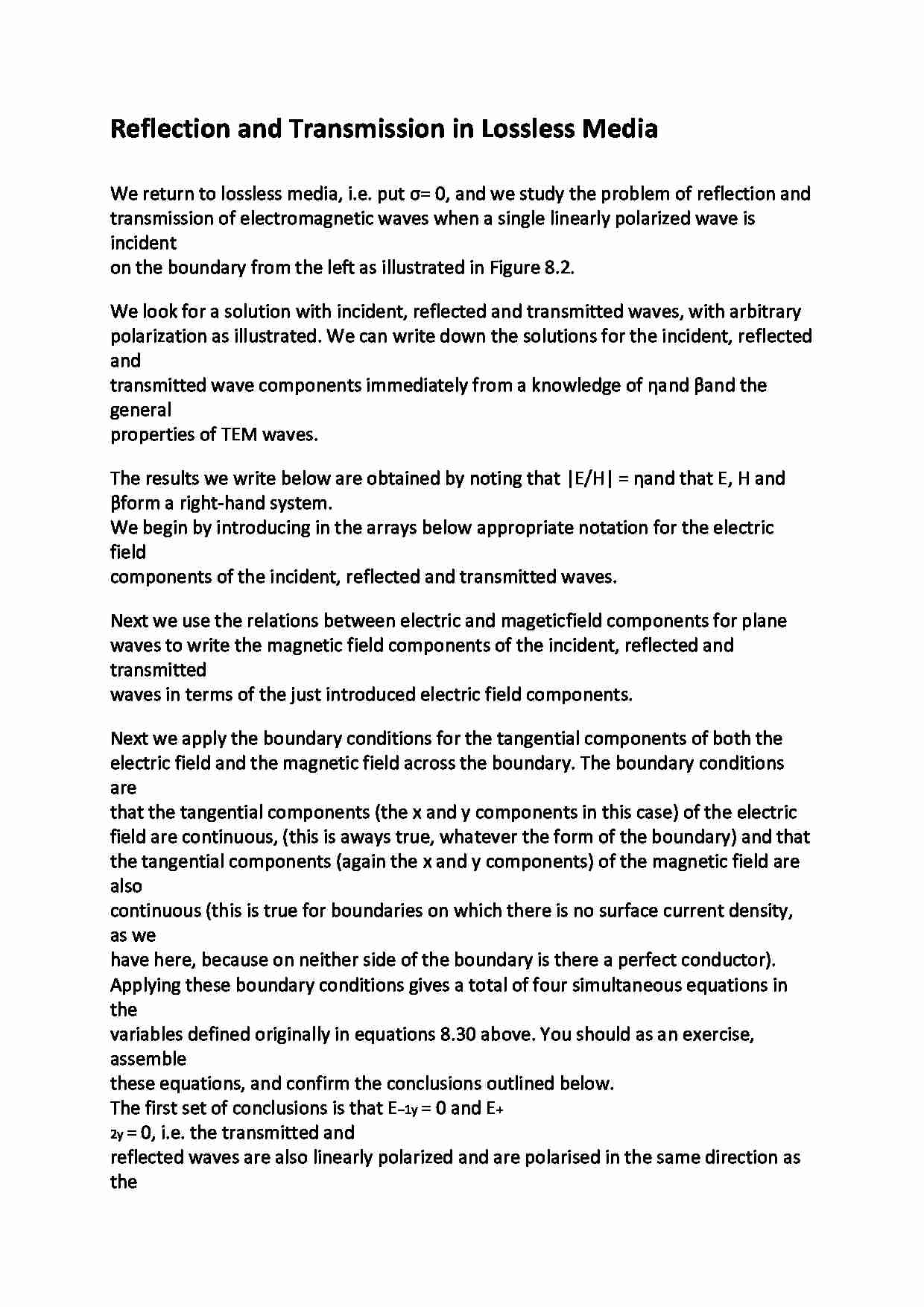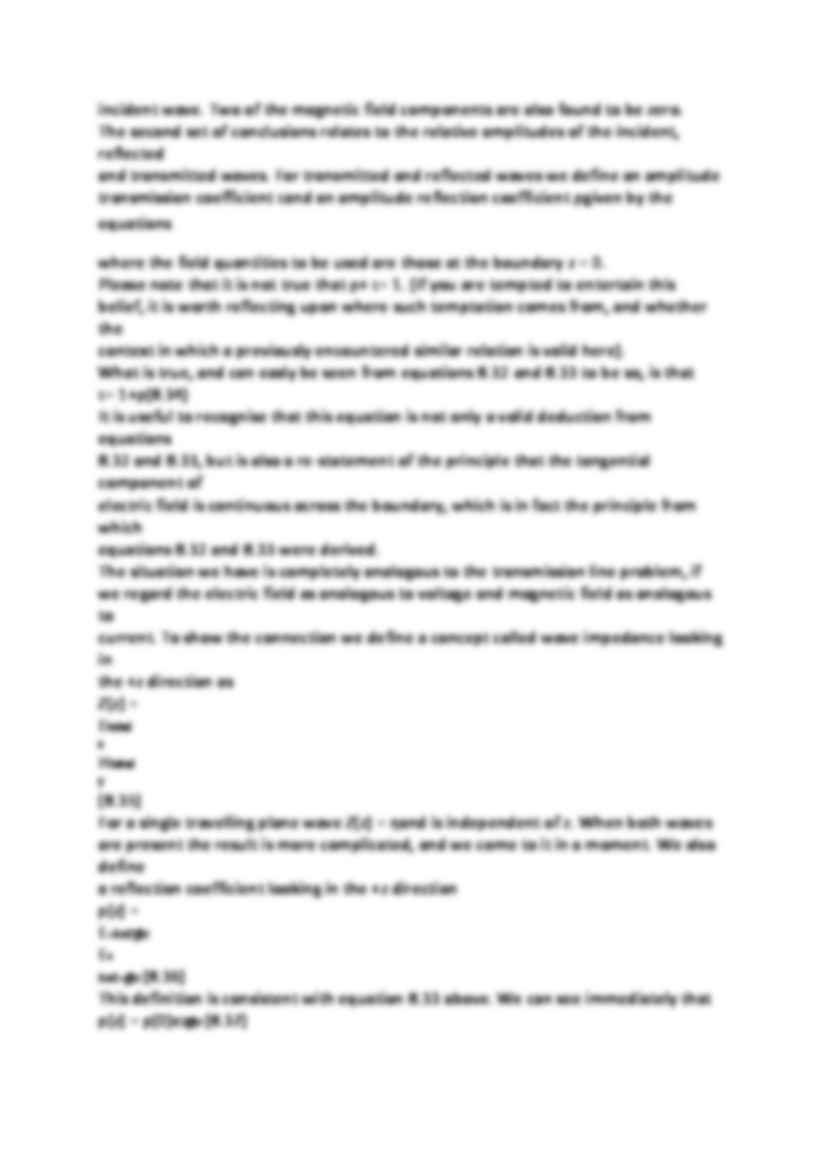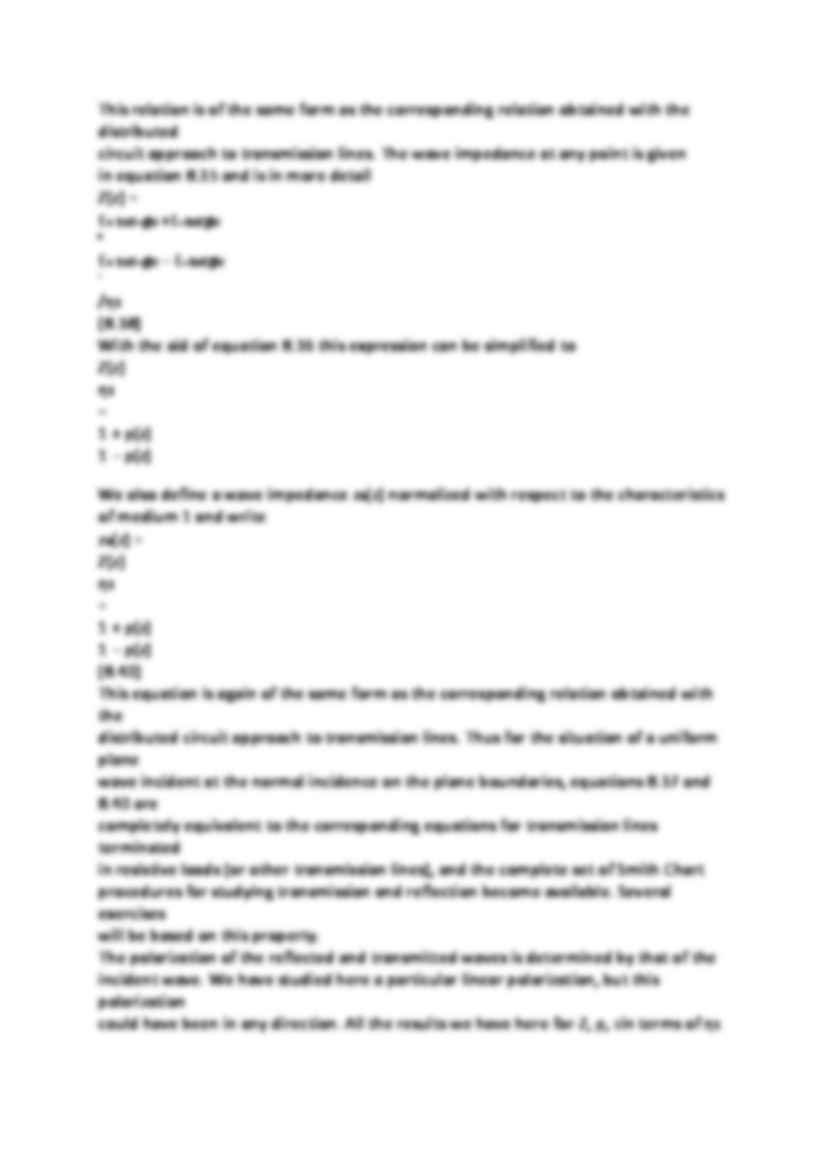To tylko jedna z 4 stron tej notatki. Zaloguj się aby zobaczyć ten dokument.
Zobacz
całą notatkę



Re fl ection and Transmission in Lossless Media We return to lossless media, i.e. put σ = 0, and we study the problem of reflection and
transmission of electromagnetic waves when a single linearly polarized wave is incident
on the boundary from the left as illustrated in Figure 8.2.
We look for a solution with incident, reflected and transmitted waves, with arbitrary
polarization as illustrated. We can write down the solutions for the incident, reflected and
transmitted wave components immediately from a knowledge of η and β and the general
properties of TEM waves.
The results we write below are obtained by noting that |E/H| = η and that E, H and
β form a right-hand system.
We begin by introducing in the arrays below appropriate notation for the electric field
components of the incident, reflected and transmitted waves.
Next we use the relations between electric and magetic field components for plane
waves to write the magnetic field components of the incident, reflected and transmitted
waves in terms of the just introduced electric field components.
Next we apply the boundary conditions for the tangential components of both the
electric field and the magnetic field across the boundary. The boundary conditions are
that the tangential components (the x and y components in this case) of the electric
field are continuous, (this is aways true, whatever the form of the boundary) and that
the tangential components (again the x and y components) of the magnetic field are also
continuous (this is true for boundaries on which there is no surface current density, as we
have here, because on neither side of the boundary is there a perfect conductor).
Applying these boundary conditions gives a total of four simultaneous equations in the
variables defined originally in equations 8.30 above. You should as an exercise, assemble
these equations, and confirm the conclusions outlined below.
The first set of conclusions is that E−1y = 0 and E+
2y = 0, i.e. the transmitted and
reflected waves are also linearly polarized and are polarised in the same direction as the
incident wave. Two of the magnetic field components are also found to be zero.
The second set of conclusions relates to the relative amplitudes of the incident, reflected
and transmitted waves. For transmitted and reflected waves we define an amplitude
transmission coefficient τ and an amplitude reflection coefficient ρ given by the equations
where the field quantities to be used are those at the boundary z = 0.
Please note that it is not true that ρ + τ = 1. (If you are tempted to entertain this
belief, it is worth reflecting upon where such temptation comes from, and whether the
(…)
… transmission line problem, if
we regard the electric field as analogous to voltage and magnetic field as analogous to
current. To show the connection we define a concept called wave impedance looking in
the +z direction as
Z(z) =
Etotal
x
Htotal
y
(8.35)
For a single travelling plane wave Z(z) = η and is independent of z. When both waves
are present the result is more complicated, and we come to it in…
… relation obtained with the
distributed circuit approach to transmission lines. Thus for the situation of a uniform plane
wave incident at the normal incidence on the plane boundaries, equations 8.37 and 8.40 are
completely equivalent to the corresponding equations for transmission lines terminated
in resistive loads (or other transmission lines), and the complete set of Smith Chart
procedures for studying…
... zobacz całą notatkę






Komentarze użytkowników (0)